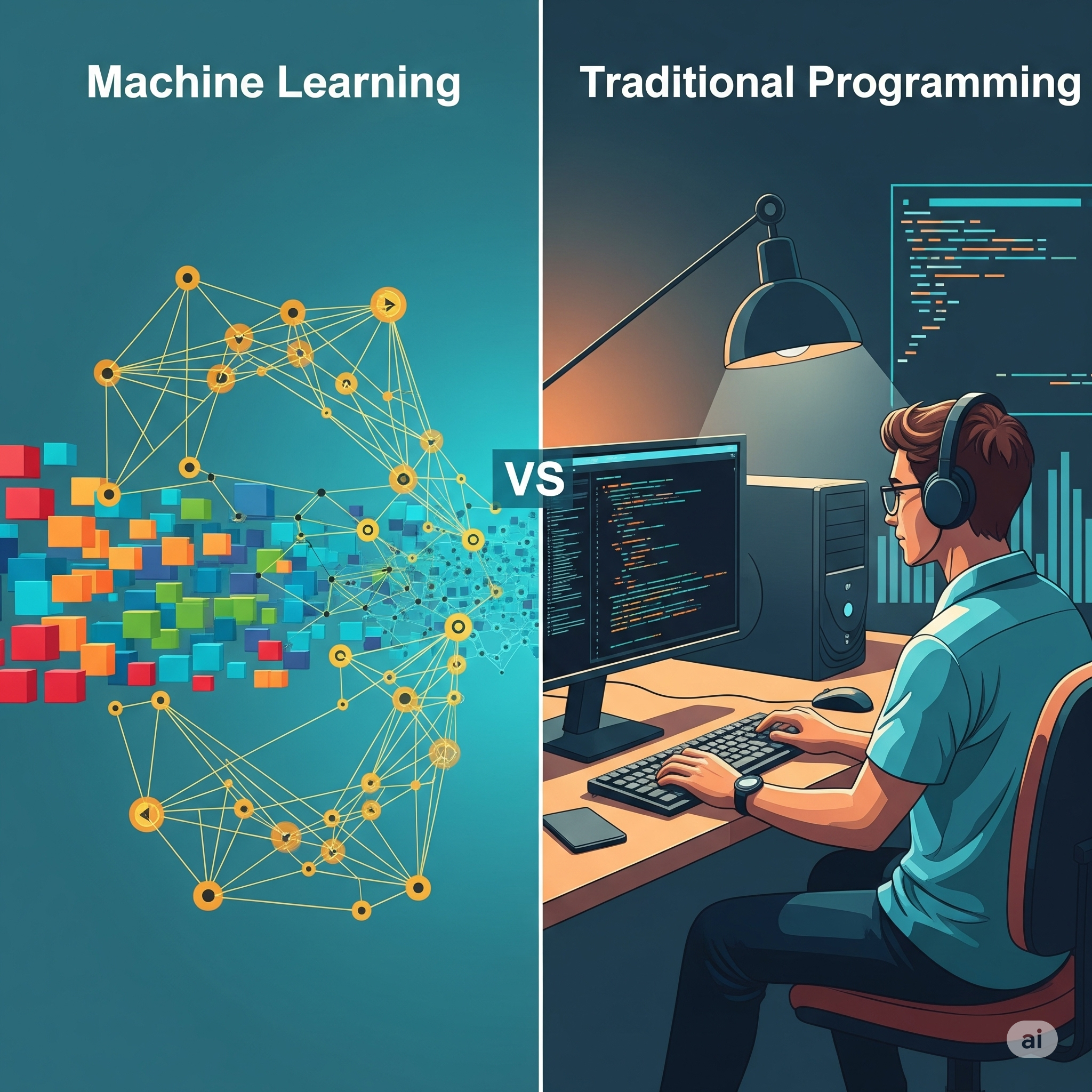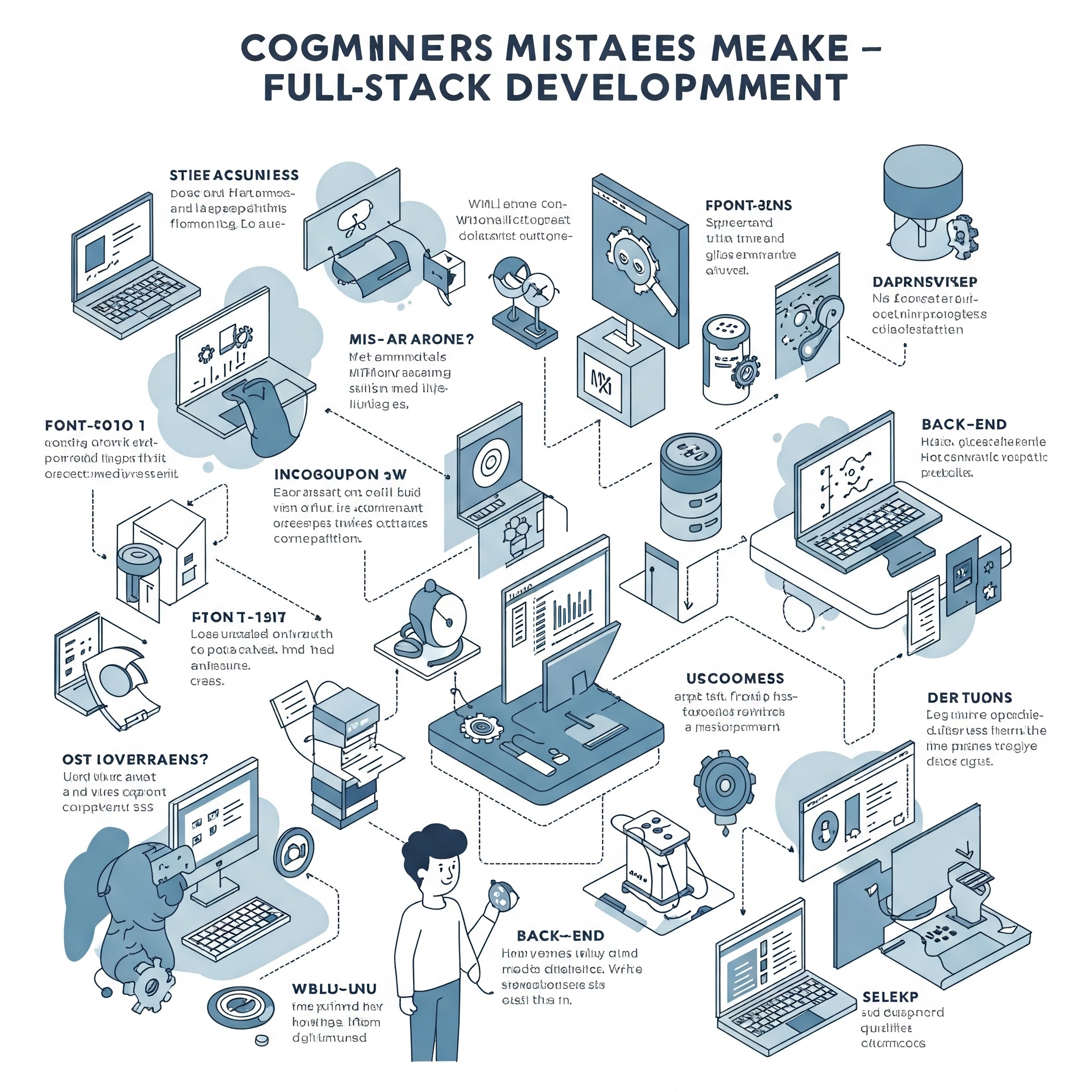The world of software development has evolved dramatically over the past few decades, with machine learning emerging as a powerful complement to traditional programming approaches. While both methodologies aim to solve problems and create useful applications, they represent fundamentally different ways of thinking about and approaching computational challenges. Understanding these differences is crucial for developers, business leaders, and anyone involved in technology decision-making.
The Fundamental Paradigm Shift
Traditional programming follows a deterministic approach where developers write explicit instructions that tell a computer exactly what to do in every situation. You define the input, specify the processing rules, and determine the output. The computer follows these instructions precisely, producing predictable results every time the same input is provided.
Machine learning flips this paradigm. Instead of programming explicit rules, you provide examples of inputs and desired outputs, allowing the system to learn patterns and make predictions or decisions about new, unseen data. The computer discovers the rules through training rather than having them explicitly coded.
This shift represents moving from “programming solutions” to “programming learning systems.” In traditional programming, you solve problems by breaking them down into logical steps. In machine learning, you solve problems by teaching systems to recognize patterns and make informed decisions based on data.
Problem-Solving Approaches
Traditional programming excels at problems with clear, definable rules and logical structures. When you can articulate exactly how to solve a problem step by step, traditional programming provides precise, reliable solutions. Think of calculating taxes, managing inventory, or processing financial transactions—these tasks have clear inputs, well-defined rules, and predictable outputs.
Machine learning shines when problems involve pattern recognition, prediction, or decision-making in complex, ambiguous situations. Image recognition, natural language processing, recommendation systems, and fraud detection are examples where the rules are either too complex to code explicitly or where the optimal approach isn’t immediately obvious.
Consider spam email detection. A traditional programming approach might involve creating rules about specific words, sender patterns, or email structures. However, spammers constantly evolve their tactics, making it difficult to maintain comprehensive rule sets. A machine learning approach learns from examples of spam and legitimate emails, adapting to new spam techniques without requiring manual rule updates.
Data Requirements and Usage
Traditional programming typically requires structured, well-defined inputs. The data format and structure are predetermined, and the program expects specific types of information in particular formats. While traditional programs can certainly process large amounts of data, they don’t inherently learn from that data or improve their performance over time.
Machine learning is fundamentally data-driven. The quality, quantity, and diversity of training data directly impact the system’s performance. Machine learning models require substantial amounts of data to learn effectively, and the learning process involves finding patterns, correlations, and relationships within that data. More data often leads to better performance, and the system can improve as new data becomes available.
The relationship with data also differs in ongoing operations. Traditional programs process data according to predetermined rules, while machine learning systems use new data to make predictions or classifications based on learned patterns. This means machine learning systems can handle situations they haven’t explicitly been programmed for, as long as those situations fall within the patterns they’ve learned.
Predictability and Control
Traditional programming offers high predictability and control. Given the same input, a traditional program will always produce the same output. This deterministic behavior makes traditional programming ideal for systems where consistency and reliability are paramount, such as banking systems, medical devices, or safety-critical applications.
Machine learning introduces an element of uncertainty. While well-trained models can be highly accurate, they operate on probabilities rather than absolute certainties. A machine learning system might classify an email as spam with 95% confidence, but there’s still a 5% chance it could be wrong. This probabilistic nature makes machine learning powerful for handling ambiguous situations but less suitable for applications requiring absolute certainty.
The trade-off between flexibility and predictability is central to choosing between approaches. Traditional programming provides certainty but limited adaptability to new situations. Machine learning offers adaptability and the ability to handle novel scenarios but with less predictable outcomes.
Development and Maintenance Processes
Traditional programming follows established software development practices. Requirements are gathered, systems are designed, code is written and tested, and applications are deployed. Maintenance involves fixing bugs, adding features, and updating functionality through code changes. The development process is generally linear and iterative.
Machine learning development involves different phases and considerations. The process typically includes data collection and preparation, model selection and training, validation and testing, and deployment. However, the model’s performance can degrade over time as real-world conditions change, requiring ongoing monitoring and retraining. This creates a cyclical maintenance process where models need regular updates to maintain effectiveness.
Debugging also differs significantly. Traditional programming bugs are usually logic errors that can be identified and fixed by examining the code. Machine learning issues might involve data quality problems, inappropriate model selection, or degraded performance due to changing conditions. Diagnosing these issues requires different skills and approaches focused on data analysis and model behavior rather than code logic.
Performance and Scalability Considerations
Traditional programming performance is typically measured in terms of computational efficiency, memory usage, and response time. Optimization focuses on algorithm efficiency and system resources. Scalability involves handling increased load through better hardware, improved algorithms, or distributed systems.
Machine learning performance encompasses accuracy, precision, recall, and other metrics specific to the problem domain. While computational efficiency matters, the primary concern is often how well the model performs its intended task. Training large models can be computationally intensive, but inference might be relatively fast. Scalability involves not just handling more requests but also managing larger datasets and more complex models.
The resource requirements also differ. Traditional programs might require significant development time upfront but relatively modest ongoing computational resources. Machine learning systems might require substantial computational power for training and potentially significant resources for inference, especially with complex models.
When to Choose Each Approach
Traditional programming remains the right choice for problems with clear, definable rules and requirements for predictable, deterministic behavior. Financial calculations, system administration tasks, user interface logic, and business process automation are typically better suited to traditional programming approaches. When you can clearly articulate the solution logic and need consistent, reliable results, traditional programming provides the most direct path.
Machine learning becomes valuable when dealing with complex patterns, large amounts of data, or problems where the optimal solution isn’t immediately obvious. Image and speech recognition, recommendation engines, predictive analytics, and natural language processing are natural fits for machine learning. When you have examples of the desired behavior but can’t easily codify the rules, machine learning offers a powerful alternative.
Many modern applications combine both approaches, using traditional programming for system logic and user interfaces while incorporating machine learning for specific capabilities like personalization, optimization, or pattern recognition. This hybrid approach leverages the strengths of both methodologies.
Skills and Expertise Requirements
Traditional programming requires strong logical thinking, problem-solving skills, and proficiency in programming languages and software engineering practices. Developers need to understand algorithms, data structures, and system design principles. The focus is on writing clean, efficient, maintainable code.
Machine learning requires a broader skill set that includes statistics, data analysis, and domain expertise in addition to programming skills. Understanding different types of models, when to use them, and how to evaluate their performance becomes crucial. Data preprocessing, feature engineering, and model validation require specialized knowledge that goes beyond traditional programming skills.
The learning curve for machine learning can be steeper, particularly for those without strong mathematical or statistical backgrounds. However, modern tools and frameworks have made machine learning more accessible, allowing developers to apply machine learning techniques without deep theoretical knowledge.
Looking Forward
The distinction between traditional programming and machine learning continues to evolve as new tools, frameworks, and methodologies emerge. Low-code and no-code platforms are making both approaches more accessible to non-programmers. Automated machine learning (AutoML) tools are simplifying model development and deployment. Meanwhile, traditional programming is incorporating more intelligent features and adaptive behaviors.
Rather than viewing these approaches as competing alternatives, the future likely involves increased integration and collaboration between traditional programming and machine learning. Understanding when and how to apply each approach, or how to combine them effectively, becomes a valuable skill for any technology professional.
The key is recognizing that both traditional programming and machine learning are tools in a broader toolkit. The best solution for any given problem depends on the specific requirements, constraints, and context of the situation. By understanding the strengths and limitations of each approach, you can make more informed decisions about which methodology to employ and how to structure your technology solutions for maximum effectiveness.
At 7Shades Digital, we specialised in creating strategies that help businesses excel in the digital world. If you’re ready to take your website to the next level, contact us today!





